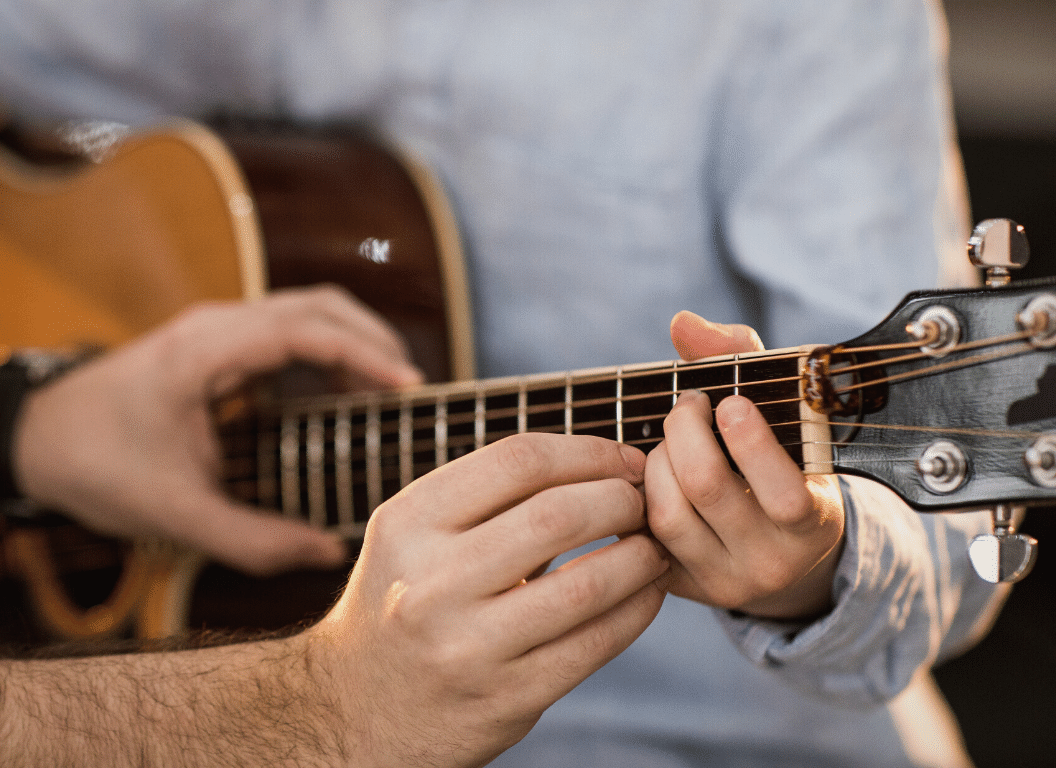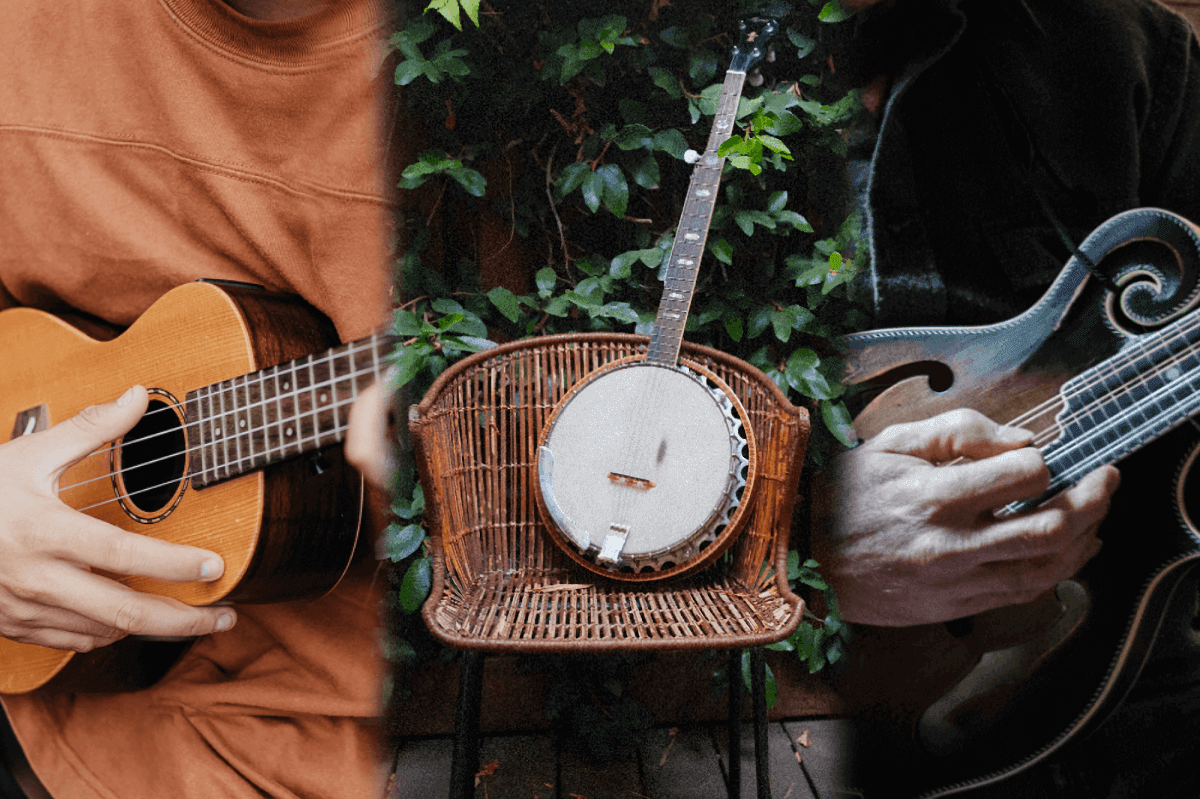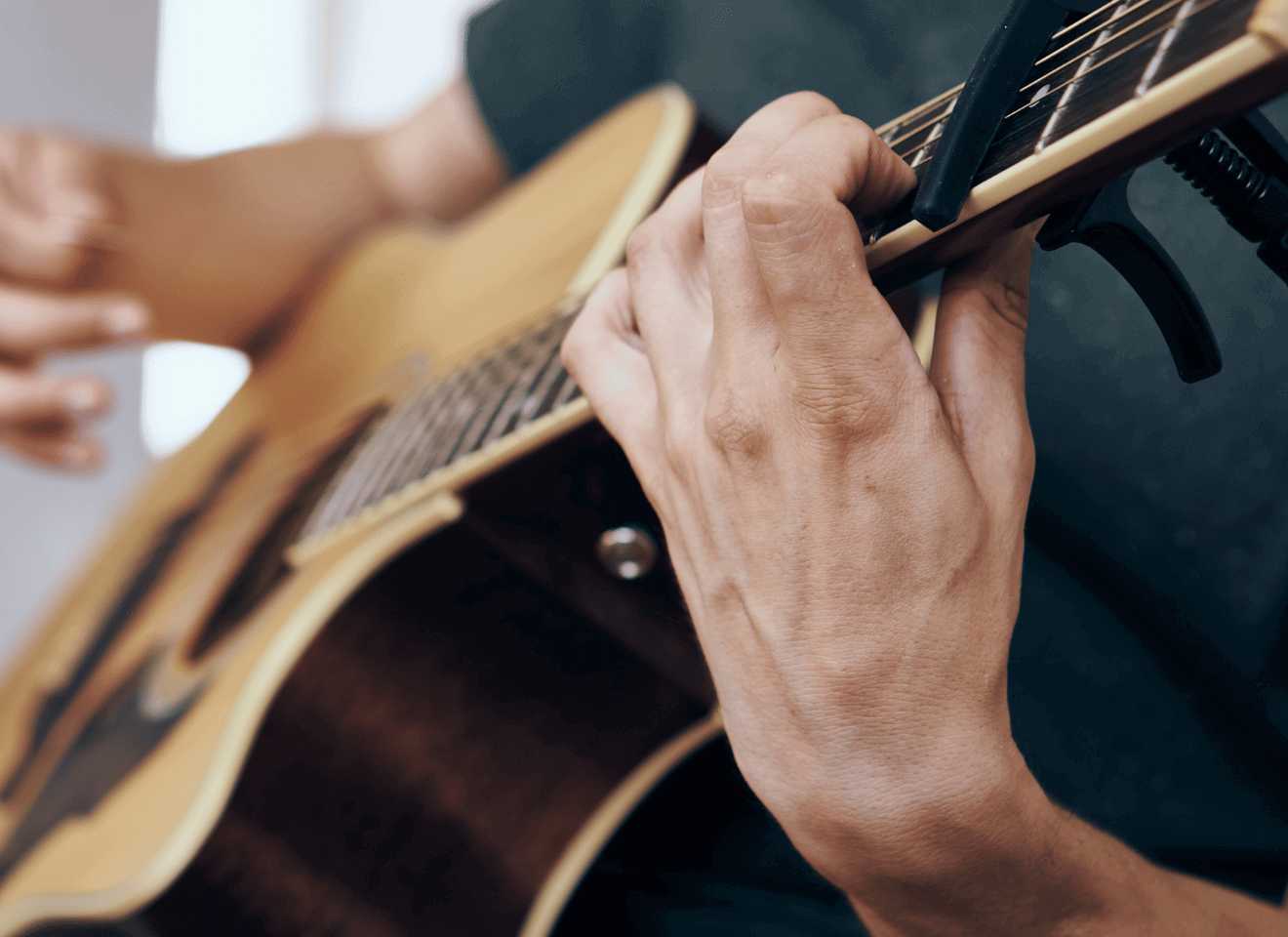Barre chords can be difficult for guitar players with small hands but they’re definitely not impossible to play in such cases.
Other things like your sitting posture, having a proper technique, and even your wrist position can have a lot of influence as well.
In this blog post, we’ll answer some of the most frequently asked questions on this topic and discuss a few tips that will for sure help you play with ease.
We’ll also teach you some exercises that will help you build strength and dexterity in your fingers, and some alternatives for you to use in the meantime
Let’s get started!
Table of Contents
- How to play barre chords with small hands?
- Tips for making barre chords easier to play
- 1. Use a partial barre
- 2. Try a different fretboard position
- 3. Make sure to correctly position your thumb and wrist
- 4. Slightly tilt your index finger
- 5. Press the strings using the right amount of force
- 6. Start with E minor shape barre chords
- 7. Pluck each string individually to check if they’re making a sound
- 8. Lower the action of your guitar strings
- 9. Change to lighter strings
- 10. Switch to a smaller guitar
- What are some barre chord alternatives?
- Are there any professional guitarists with small hands?
- How to make your fretting hand stronger?
How to play barre chords with small hands?
The quick answer is that to play barre chords with small hands you’ll have to make sure to correctly position your thumb and wrist, slightly tilt your index finger, and press the strings using the right amount of force. If you still have no luck, try a different fretboard position, just use a partial barre, lower the action of your guitar strings, or switch to a smaller guitar.
Barre chords are an essential part of any guitarist’s toolkit.
These chords are played by placing the index finger across all of the strings at a particular fret and then using the other fingers to form the chord shape.
Also, they tend to be tricky to play at first, but with a little practice, they can be mastered.
One of the great things about barre chords is that they can be moveable up and down the neck of the guitar, making them very versatile.
If you’re on this page right now, you might have asked yourself at some point whether your hands are too small to play a barre chord or not.
The answer is, no, your hands are not too small to play the guitar!
Anybody can play the guitar, take this YouTube video for example:
That is Konstantina Andritsou at the age of 7 playing a fairly difficult piece on a classical guitar (which have wider fretboards by the way).
Although there’s a fair argument that some people are just naturally talented, I think anybody can do it with the right technique and approach.
Tips for making barre chords easier to play
Yes, is no secret that barre chords can be difficult to play, especially for beginners.
But with a little bit of practice and some helpful tips, you can surely make them much easier to play.
1. Use a partial barre
If you find that you can’t quite manage to play the full barre chord, try using a partial barre instead.
This involves only barring the strings at the first, second, third, and optionally the fourth fret, depending on which chord you’re playing.
For instance, if you want to play A minor as a barre chord, you would barre the 1st, 2nd, and 3rd strings in the 5th fret, and optionally the 4th string on the 7th fret.
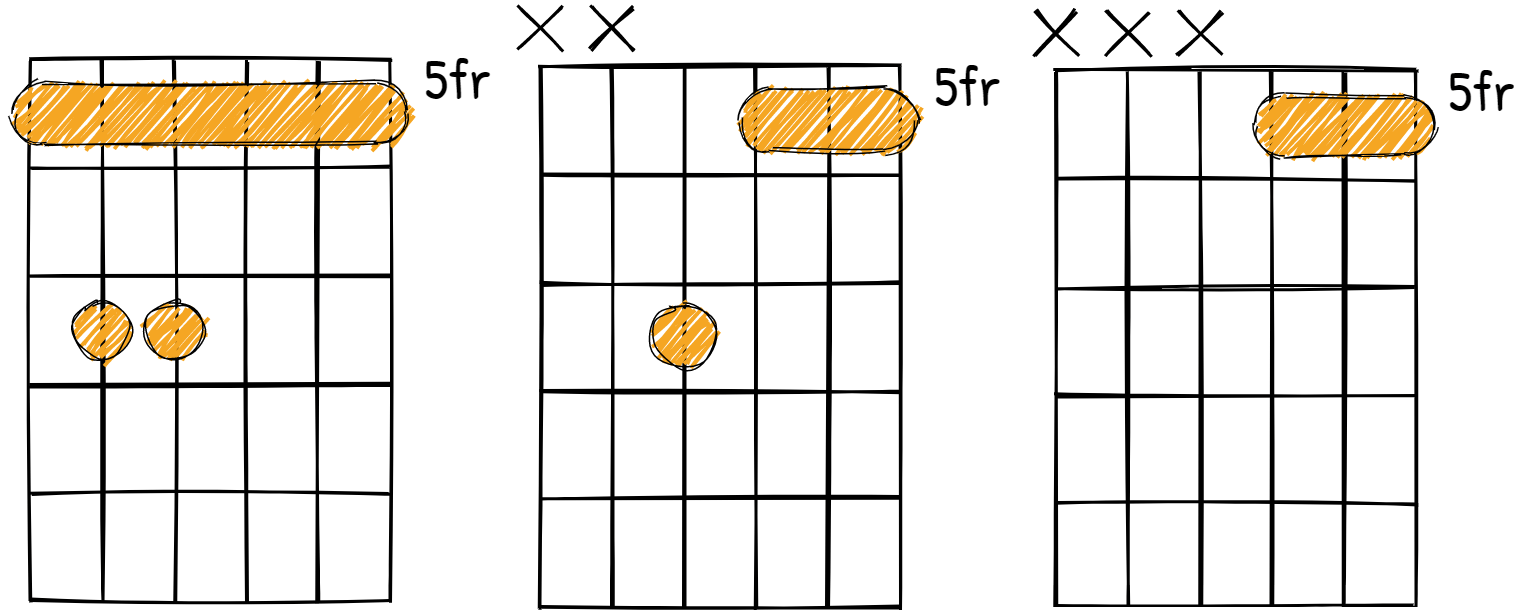
On the other hand, if you want to play an A major as a barre chord, then you’d barre the first three strings of your guitar in the 5th fret, and press on the 3rd string, 6th fret with your middle finger.
For the other common shapes, you’d simply not use a barre chord at all and press each note as regular chords (Jimi Hendrix used to do this all the time, by the way).
For instance, let’s take a look at a Bm barre chord:
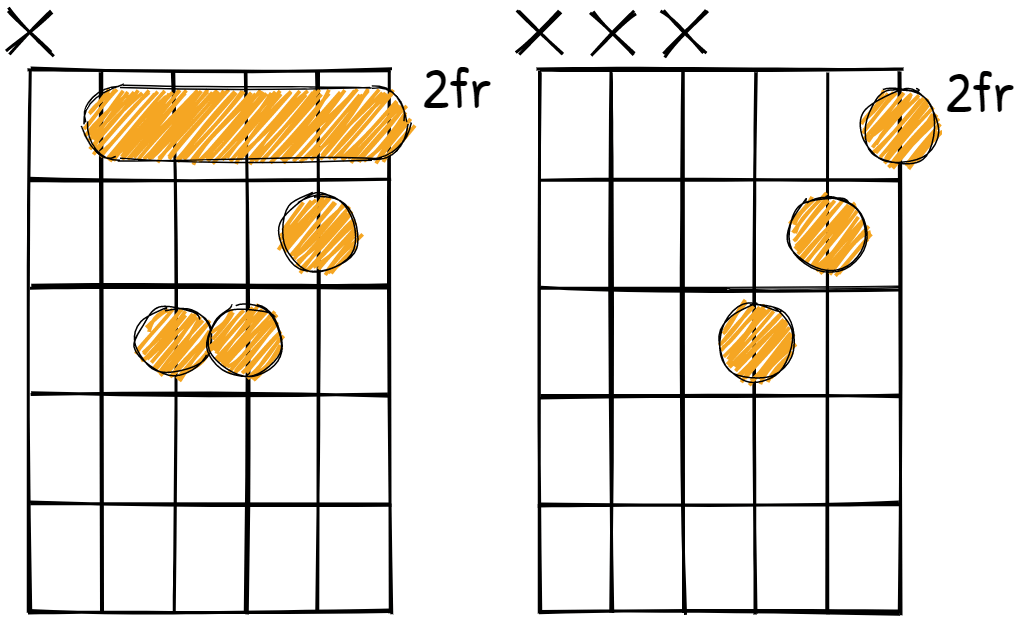
On the left is the regular Am-shape Bm barre chord, and on the right the easy alternative for those that can’t properly play barre chords yet.
The catch with this is that you’re not always playing the bass notes of your chords using the 4th, 5th, and 6th strings, which is what essentially makes any chord sound fuller.
But the good thing is that you’ll start building strength in your fingers so that you can, later on, play these chords properly.
2. Try a different fretboard position
Another way to make barre chords easier to play is to try a different fretboard position.
For instance, if you’re finding it difficult to play an Fm barre chord on the 1st fret of your guitar, try playing it in the 8th fret instead.
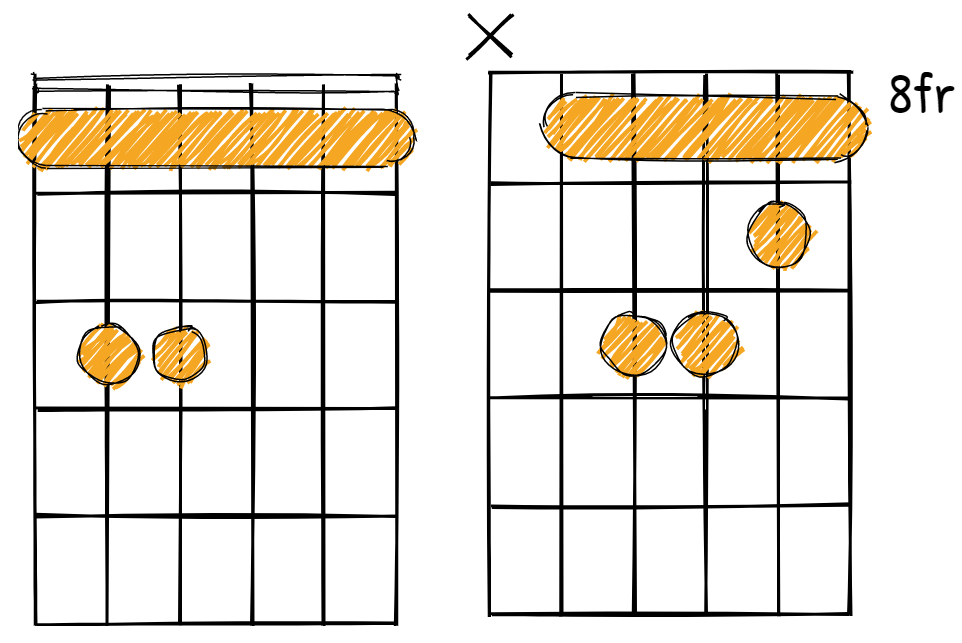
This way, you’ll still be playing the same chord, but it will be a bit easier to hit and press all the notes.
Since it’s harder to press on the strings when you’re in the first 3 frets, try to avoid playing chords in this area as much as possible.
Frets that are further away from the guitar nut are typically where barre chords are the easiest to play.
3. Make sure to correctly position your thumb and wrist
When playing barre chords, it’s important to position your thumb and wrist in the right way so that you have the most control over the strings.
Your thumb should be positioned behind the neck of the guitar and your wrist should be slightly bent.
This is very important since all the pressure from your fingers will be coming from your thumb and wrist.
Be careful of popular playing practices such as wrapping your thumb around your guitar neck, this will cause your hand to feel smaller than it really is.
4. Slightly tilt your index finger
When you’re playing a barre chord, make sure to slightly tilt your index finger so that it’s pressing down on the strings at an angle.
This will give you more control over the strings and make it easier to hold all the notes down at once.
Although this may seem like a small adjustment, it can make a big difference.
By tilting your finger, you create a bit less space between your finger and the fretboard, which prevents muted strings and makes it easier to press down on all of the strings evenly.
5. Press the strings using the right amount of force
When pressing down on the strings to form a barre chord, it’s important to use the right amount of force.
If you press too hard, you’ll find that it becomes very difficult to hold all the notes down and you may even end up bending some of the strings.
Conversely, if you don’t press hard enough, the chord will sound weak and won’t be very in tune.
The best way to find the right amount of force is to experiment and see what works best for you.
You’ll find out that as soon as a string touches the fret metal, it already changes its pitch.
In other words, you don’t have to push your strings all the way until they touch the fretboard wood.
Again, a good rule of thumb is to use just enough pressure so that all of the strings ring out clearly without any buzzing sounds.
6. Start with E minor shape barre chords
If you’re just starting out, it’s best to start with E minor shape barre chords.
These chords are the easiest to play and don’t require any difficult finger placements.
Also, most importantly, you’ll have your middle finger available to support your index and add extra strength to the barre.
This makes a huge difference, so much that you’ll most likely learn to play minor barre chords before major barre chords.
There’s nothing wrong with that, as long as once you’ve mastered the easiest shapes, you then move on to other shapes and positions
I encourage you to watch this YouTube video by Your Guitar Academy:
This is a great resource for those of you who are specifically struggling with Em shape barre chords.
If you pay attention, he talks about the importance of making each note of the chord sound appropriately.
The reason why is that if you don’t do that, the chord won’t even sound minor or major, and it would just be a big power chord.
7. Pluck each string individually to check if they’re making a sound
When you’re first starting out, it’s a good idea to pluck each string individually to check if they’re all making a sound.
This way, you can make sure that the chord is in tune and you’re not playing any muted strings.
If one or more of the strings are muted, you can try adjusting your hand position or the amount of pressure you’re using.
For those of you that just strum your guitar, most likely than not, you’ll run into the risk of having at least one string not making any sound.
And although when played all together, the chord still sounds decent, it’s still not as full and powerful as it can be.
8. Lower the action of your guitar strings
If you find that it’s difficult to press the strings down to form a barre chord, you may want to lower the action of your guitar strings.
This means that you’ll need to take your guitar to a music store and have them adjust the height of the strings.
Although you should always make sure that the action of your guitar is properly set up, in this case, it can be a quick and easy fix if you’re struggling with barre chords.
The lower the action of your guitar strings, the easier it will be to press them down.
On the other hand, if the action is too low, you’ll find that the strings will buzz when you play them.
So it’s important to find a happy medium where the strings are still easy to press down but don’t buzz when you play them.
9. Change to lighter strings
Another option you have is to change to lighter strings!
This will make it easier for you to press the strings down and form a barre chord.
Light strings are usually easier to press down than regular gauge strings, but they don’t sound as full and powerful.
So it’s up to you to decide if the extra effort is worth it or not.
On the other hand, as a plus, it’ll also be easier to bend your strings and play chords in general, since your playability will definitely be improved with the right strings.
Check some of our resources on the best guitar strings for both acoustic and electric guitars:
These resources are very helpful if you want to compare and read our opinion on all top-rated string manufacturing companies in terms of quality, longevity, tone, and price,
10. Switch to a smaller guitar
When all else fails, you may want to switch to a smaller guitar.
Although a full-size guitar is ideal for most people, it may actually not be the best fit for you.
There are many alternatives that you can get, for example switching to a 3/4 or 1/2 size guitar.
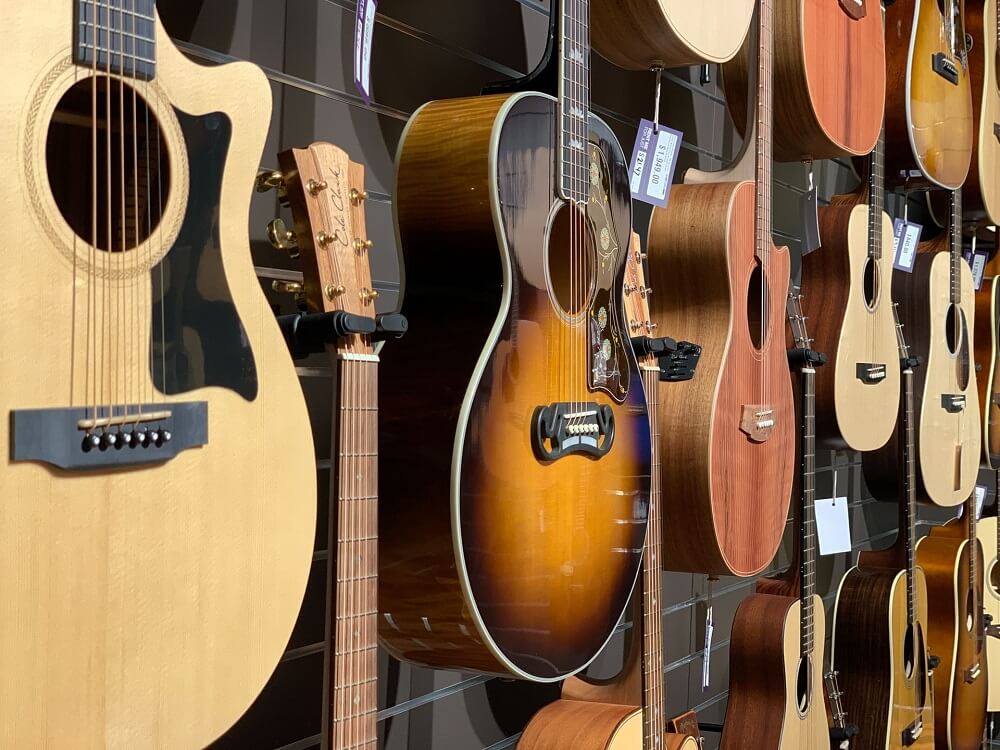
On the other hand, you can completely make the change from acoustic to electric guitar.
Electric guitars are a lot smaller and easier to play, so this would be a good option for those of you that are struggling with barre chords.
What are some barre chord alternatives?
There are many barre chord alternatives that you can use instead of the regular chords.
Some of those include:
- Using power chords
- Moving the chord shapes up or down the fretboard
- Using open chords
Each of these alternatives has its own unique sound, so it’s up to you to find the ones that you like best.
A power chord is simply a two-note chord, where you only play the root and the fifth of the chord, as well as possibly octaves of those notes.
This is a great option for those of you that find it difficult to play barre chords.
All you need to do is hold down the root note with your index finger and then play the fifth of the chord with your ring finger.
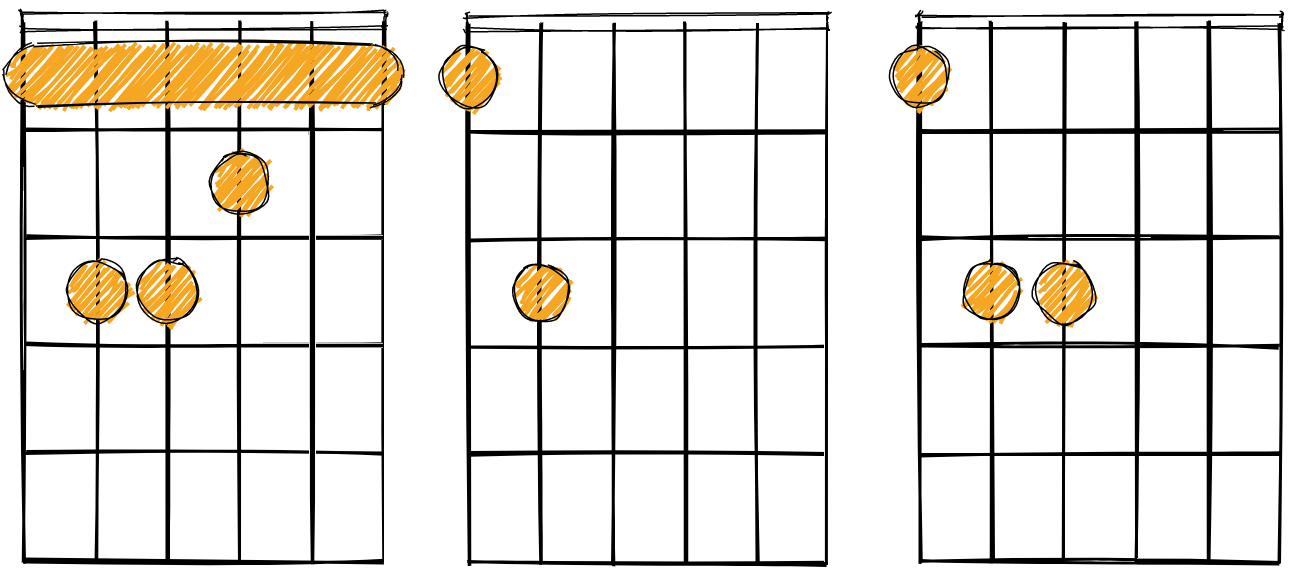
The second option is to move the chord shapes up or down the fretboard.
This is a great way to find new chords that you may not have known about before.
All you need to do is move the chord shape to a new fret on the guitar and you’ll have a new chord that you can use.
If all you’re doing is trying to find an alternative for a difficult barre chord, then just look for its root note, and play the proper shape.
Lastly, you can just use open chords instead of barre chords.
Open chords are chords that don’t use any barres, and they’re a great option for beginners.
There are many different open chords that you can learn, and once you have them down, you can start using them in your songs.
For every barre chord you’ll come across, there’s for sure an open chord that will sound just the same.
Are there any professional guitarists with small hands?
Yes, there are many professional guitarists with small hands.
Most famously known for this fact is Angus Young from AC/DC, who plays guitar with very small hands but has done so with immense expertise and success.
Take that as inspiration, if he can do it then there is no way that you cannot.
Watching that video alone should allow you to see how he uses his pinky finger to play power chords instead of his ring finger, which goes back to the few tips we shared at the beginning of this post.
That’s one strategy that you can potentially use as well to get around having small hands.
How to make your fretting hand stronger?
If you’re a guitar player, then you know that having a strong fretting hand is essential for playing fast and cleanly.
There are a number of tips you follow to build strength and dexterity in your fingers, but one of the best is simply to practice more.
The more you practice, the stronger your hand will get.
If you’re constantly working your muscles, they’ll eventually get stronger as a result, just like if you go to the gym!
Another great way to make your fretting hand stronger, especially so that’s easier to play barre chords, is to barre the strings without attempting to play any chords.
In other words, you should just position your index finger as you normally would, and pluck each string to make sure they’re all making a clear sound.

You can do that for at least 5 minutes a day while alternating between frets.
Lastly, stretch your hand regularly before and after playing the guitar.
Stretching your hand is a great way to increase its flexibility and strength.
It’s also a good way to prevent injuries from happening in the future, and will also slightly reduce bad posture.

Born and raised in Florida! I’ve been playing guitars for the past 5 years. Love to learn, and I’m always striving to achieve greater heights in music. Currently have a Fender Stratocaster as my main guitar.


